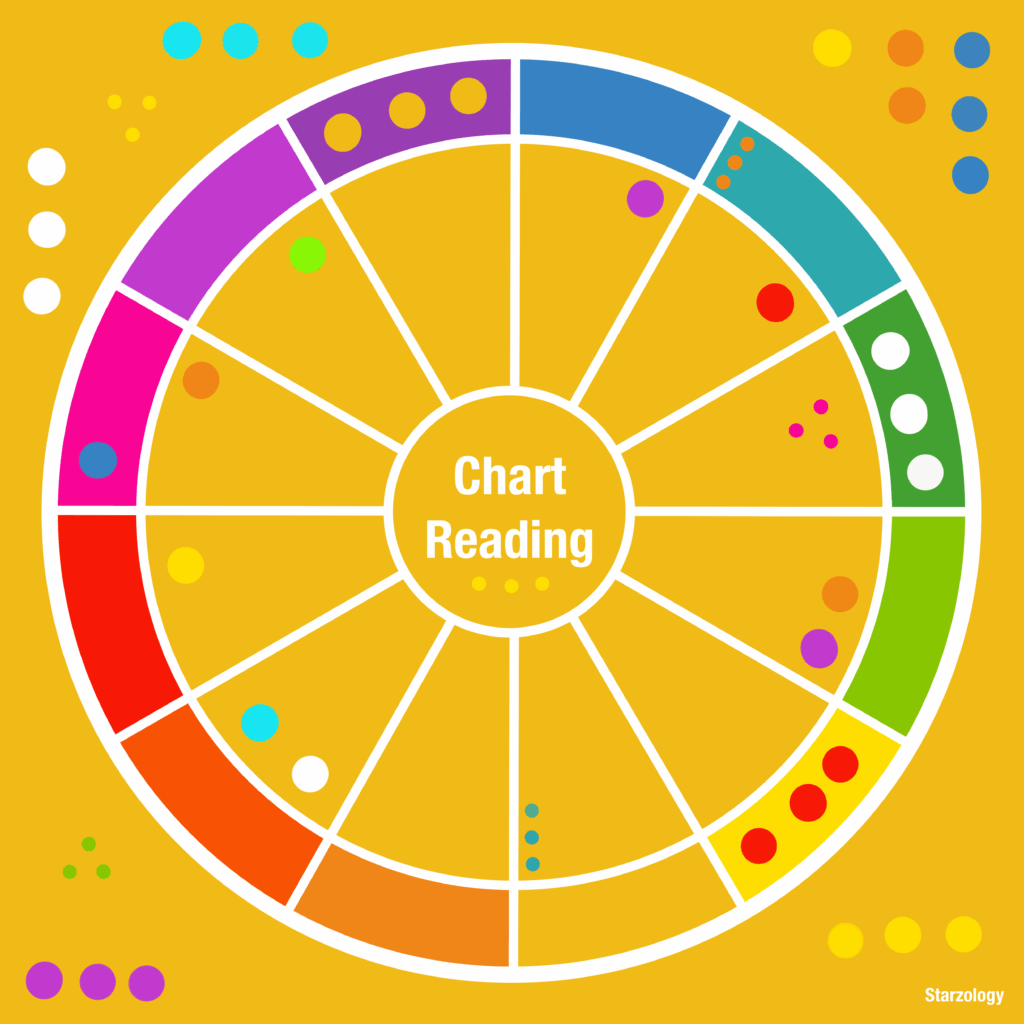Author: Alison Price – Published: May 2021 – Revised: February 2024
The Astrological Houses
Introduction
Houses pertain to different areas of life. They are like the backdrop or stage of a play. There are twelve houses in every chart. The houses are numbered from one to twelve anti-clockwise starting from below the ascendant.
Houses can be any width; some are as small as twenty degrees wide and some are as large as forty-five degrees wide. It all depends on the house system being used and the place of birth for which the chart is set.
House Systems
All the charts on this website use the Placidus house system. It is recommended that you stay with one house system (these days most astrologers use the Placidus house system mainly because there have been Placidean Tables of houses available for years, which may not be the ideal, but it is the reality).
For the first year of your astrology study or until you can make an educated decision by exploring other house systems to decide which one you may feel resonates better with your own chart. Other house systems in common use are Equal house, Koch, Morinus, Porphry and Regiomantanus.

House Cusps
House cusps are measured in degrees and minutes and are the dividing line between two houses. The house flows anti-clockwise and ends at the next house cusp. A house has a cusp at both sides, but the anti-clockwise cusp is the one that pertains to the house. A planet is in one house or another it is never in both although it can be very close to a cusp (within one degree).
House cusps are derived from the birth time. It follows that a correct birth time is required for exact house cusps. If you do not have a firm birth time, then the houses cannot be used.
House Rulers
Every house has a ruler. The ruler of a house is the planet which rules of the sign found on the house cusp. For example: The ascendant sign’s planetary ruler is the ruler of the first house. This is a special case as the ruler of the ascendant is also the chart ruler.
The Sun and the Moon usually rule one house as the rulers of Leo and Cancer. Mercury and Venus usually rule two houses each Gemini and Virgo for Mercury and Taurus and Libra for Venus. Mars, Jupiter and Saturn usually each rule one house and co-rule another (traditional) house.
Mars rules Aries and co-rules Scorpio, Jupiter rules Sagittarius and co-rules Pisces and Saturn rules Capricorn and co-rules Aquarius. Uranus, Neptune and Pluto usually co-rule one house each. Uranus rules Aquarius, Neptune rules Pisces and Pluto rules Scorpio. Chiron does not rule a house because it does not rule any sign.
If a house is thin (less than thirty degrees wide) then one planet may rule two consecutive houses as the same sign may be on both adjacent house cusps. A house ruler (by its sign, house and aspects) imparts its energies onto the affairs of the house.
Intercepted Signs
If a house is very wide (more than thirty degrees) there is the possibility that one sign is on the house cusp, the next sign is fully within the house and the third sign is on the following house cusp. The middle sign does not have a house cusp. This is known as an intercepted sign.
If the intercepted sign is Cancer or Leo it means that one of the luminaries does not have a house to rule. Intercepted signs are always in pairs and are found opposite each other.
The planetary ruler of the intercepted sign is a moot point for that house’s interpretation. It is as though it has no voice in the chart. That planet does not have as much weight.
Three Types of Houses
There are three types of house; angular, succedent and cadent.
Angular Houses
The angular houses are the 1st, 4th, 7th, and 10th houses. They are found anti-clockwise from each angle. (Ascendant 1st, IC 4th, descendant 7th and MC 10th). Planets in angular houses are dynamic, front and center and are present.
Succedent Houses
The succedent houses are the 2nd, 5th, 8th, and 11th houses. They fall behind the angular houses. They are also known as support houses as they support the angular house next to them, usually financially. Planets in succedent houses are paused, on hold and are pending.
Cadent Houses
The cadent houses are the 3rd, 6th, 9th and 12th houses. They fall behind the succedent houses. Planets in cadent houses are passive, retiring and are mute.
Extend Yourself
General
Referring to your chart and in yoru astrology journal please do the following:
-
State which house system is used.
-
List the planets that are in angular, succedent and cadet houses.
-
Note houses which have tenants and are vacant.
-
List any pair of intercepted signs.
- Note which planet(s) rule each house.
-
Note which planet is your chart ruler.
-
Note your chart ruler’s hemisphere, quadrant, triple division and house.
-
Note which planet(s) rules the most houses.
- Note any planet(s) which do not have a house to rule.
Extend Yourself Further
- Write a short piece on each of your houses (100 words per house).
Author Bio
Alison Price: Astrology Coach
Alison specializes in guiding Aspiring Astrologers. Her aim is to help you uncover your individual creativity and lead a fulfilling life using your own astrology. She shares her wisdom from the heart, often sprinkled with a touch of humor.
To learn more about Alison’s journey, visit this page.
If you’d like to get in touch with Alison, you can reach out to her via email at starzology@gmail.com.
More Articles
If you enjoyed this post, you may like some more astrology related articles from our blog.

Grand Trines
In astrology, a Grand Trine is a major aspect pattern formed when three planets create a triangle of harmony in the chart.

Rising Order of the Inner Planets
Author: Alison Price - Published: October 2025 On your Marks, Get set, Go! Have you ever wondered why some people seem to process life in such a distinct way through thinking, feeling and expressing themselves almost in a rhythm of their own? The rising order of...

Christmas Birth Chart
Learn more about the birth chart for Jesus Christ of which there is debate among historians and theologians.








